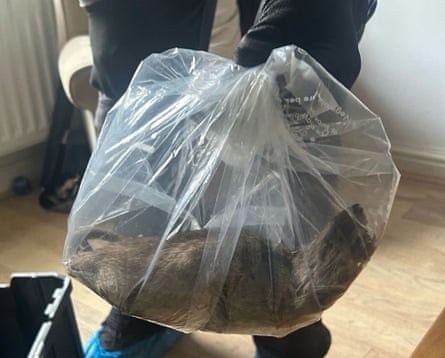Name: The Giant Rat of Normanby.
Age: Unknown, but probably not more than three years old, given the lifespan of a rat.
Appearance: Enormous!
A giant rat! Where? Keep it away from me! Don’t worry, it’s deceased. The 22in colossus was found by a pest controller in a home in Normanby, North Yorkshire.
I’m more of a metric person, so I don’t know how big that is. You might prefer it that way: 22in is nearly 56cm. That’s five tins of beans, end to end. Or longer than the average cat (without tail). It looks exceptionally bulky, like a meerkat on steroids.
Brrrr, I bet it could eat five tins of beans. Is this the biggest rat ever? No: the extinct Timor giant rat was absolutely vast: it’s estimated it could have weighed up to 6kg (nearly a stone).
Conan Doyle wasn’t far wrong with his giant rat of Sumatra, then? About 4,000km, but sure. The Normanby specimen is still spectacular: it has beaten the 21in “Dorset mega-rat” of 2018.
But it’s dead, you say, so we can go back to our giant-rodent-free lives? We certainly can’t hope for rodent-free lives. “It is a growing problem,” local councillor David Taylor said, blaming overflowing public bins and overgrown vegetation, among other factors.
So, it’s a Normanby problem. Phew. Nope, it’s a great time to be a rat globally. Research on rat numbers published in January found that rising temperatures and population mean 11 global cities are experiencing significant increases in rat numbers: 390% in Washington DC, 300% in San Francisco and 186% in Toronto, which is reported to be experiencing a “perfect rat storm”, according to a city councillor. New York reportedly has 3 million Rémys running around, hence the city appointing a “rat tsar”.
How about in the UK? Well, the same conditions that allow rats to thrive elsewhere – warmer temperatures, increasing urban populations creating more waste – apply here. And cuts hitting bin collections aren’t helping. The recent Birmingham bin strike apparently created a rat “banquet” of refuse.
And how bad are rats, exactly? They can destroy infrastructure and contaminate food supplies (costing an estimated $27bn in the US alone) and carry about 50 zoonotic (that’s transmissible to humans) diseases and parasites, such as salmonella and leptospirosis. Research also shows they have a negative impact on the mental health of people affected by infestations.
Ratatouille was a lie. What can we do? Rats are highly fertile (theoretically, they can conceive every 25 days), mobile and adaptable and can survive on as little as an ounce of food a day, so not much. Management strategies involve poisoning, trapping and trying to limit their food sources – and New York City and other places are experimenting with rat birth control – but we are fighting a losing battle.
Do say: “The Normanby mega-rat is an outlier – most rats are only 6-11in long.”
Don’t say: “Good luck shoving that under your chef’s hat.”









